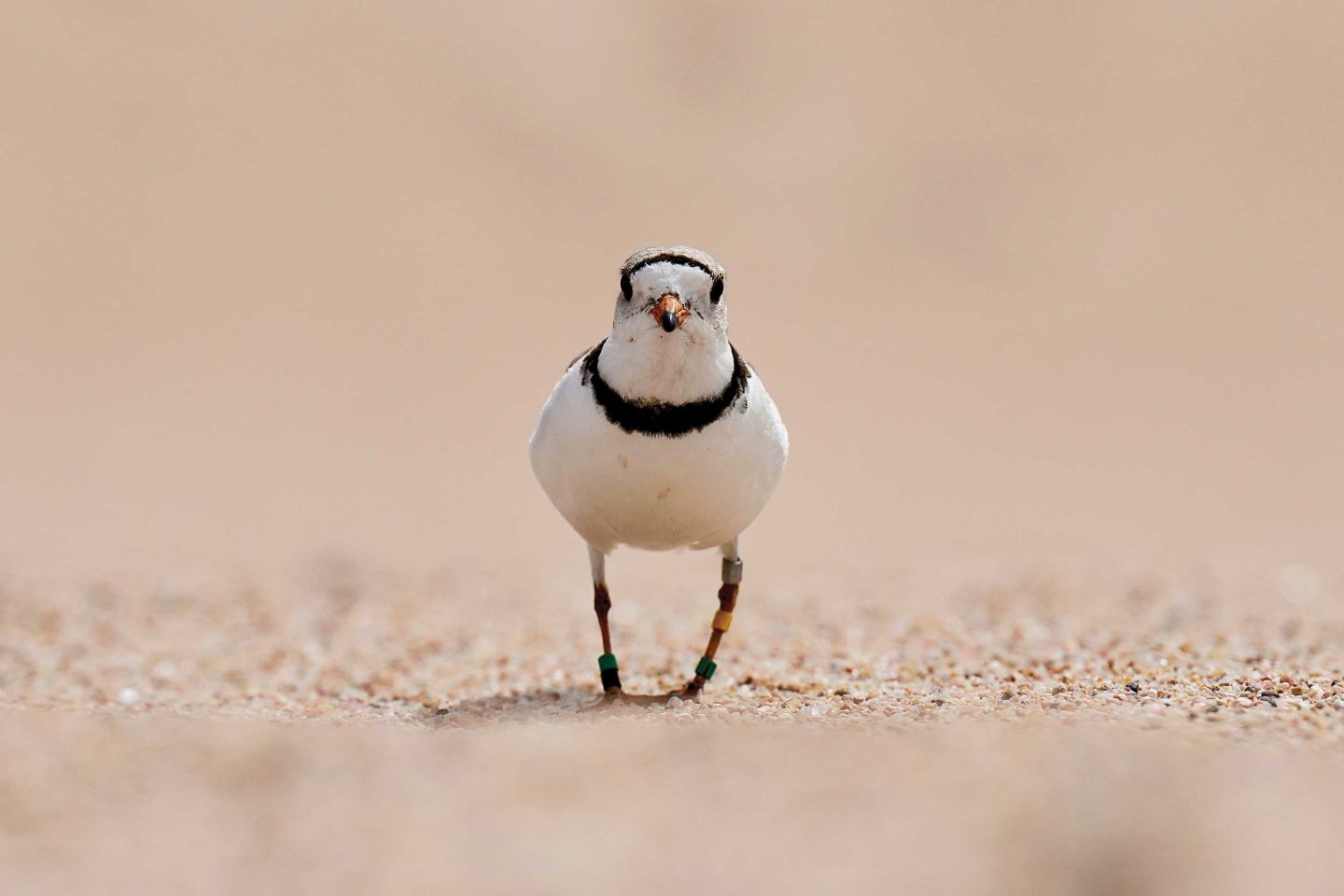
By Elsa Forsberg
As far as I’m concerned, 2024 was the year of Plover 274. She is a piping plover, a small shorebird species that is both state and federally threatened. The Tern and Plover Conservation Partnership — a collaboration of Nebraska Game and Parks, the University of Nebraska-Lincoln, private industry and the U.S. Fish and Wildlife Service — has tracked more than 800 piping plovers over the years, but Plover 274 stands out for several reasons.
Our record of her began in May 2013, when she was given colored plastic leg bands that allowed us to uniquely identify her. Since 2013, Plover 274 has hatched at least five nests both on sandbars and at sand and gravel mines along the lower Platte River in Sarpy, Saunders, Douglas and Dodge counties. This summer, she was back for the first time at the sand and gravel mine where she was banded 11 years prior.
It was quite a summer for Plover 274. In June, she was incubating her nest on the sand when big thunderhead clouds rolled in and brought golf-ball sized hail and 6 inches of rain in an hour. Once the clouds cleared, Plover 274 was still there, sitting tight on her nest. Contractors at the sand and gravel mine where she was nesting were amazed that a small bird could protect her nest in a storm that cracked windshields. They fondly called her “Hail Mary” after that. She successfully hatched her eggs a week later and at the end of July, Plover 274 was ready for her next adventure — winter break on a Miami beach.
While Plover 274 became famous in her summer home this year, she is also popular in her winter abode. She has spent every winter for the last 12 years at the same beach on a barrier island off the coast of Florida, where birdwatchers recognize her distinct leg band color combination. Reports of Plover 274 on the beach let us know she has made it another day, which is quite an accomplishment.
Beyond surviving thunderstorms and attracting many admirers, there’s something else special about Plover 274 — she is at least 13 years old, which is more than double the average lifespan of a piping plover. As the summer of 2025 draws closer, I hope to see her back in Nebraska to raise yet another brood of chicks and help boost the recovery of her species.
